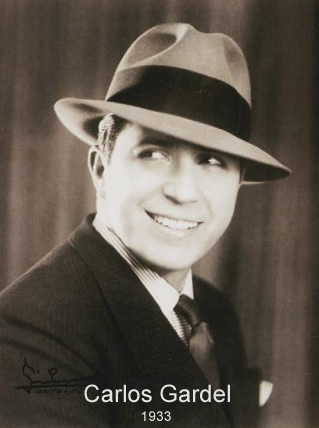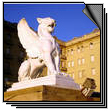Uruguay's Tango Culture
Tango, a central part of Uruguay's culture.

It is a common mistake to say that Tango is the music of Argentina. Tango is the cultural expression of the Rio de la Plata, which includes Buenos Aires, Rosario and Montevideo. Uruguay itself was undergoing a massive immigration during the later part of the 1800s and early 1900s. The intermixing of African, Spanish, Italian, British, Polish, Russian and native-born Uruguayan people resulted in a melting pot of cultures; The newcomers brought with them to their new home their music, their musical instruments and their dances. Soon the music from the Argentine countryside, the African- influenced milonga, was enriched by its exposure to the newly-arrived polkas, mazurkas, and eventually the Habanera and the waltz. Afro Argentinean steps and rhythms started to mix with European music and choreography.
Most likely the tango was born in dance venues attended by compadritos, young men, mostly native born and poor, who liked to dress in slouch hats, loosely tied neckerchiefs and high-heeled boots with knives tucked casually into their belts. The compadritos introduced tango to various low-life establishments where dancing took place: bars, dance halls and brothels. It was here that the African rhythms met the Uruguay milonga music (a fast-paced polka) and soon new steps were invented and took hold.
The Tango started as a cheerful music danced and played in the slums, and could often be heard in the bordellos. Them Tango moved slowly from the slums to the Barrios, or working and middle class neighborhoods. It was through the performances of the Organitos (portable organs ) by itinerant Italians that the tango got into homes. By the beginning of the 20th century, tango was moving from the outskirts to downtown.
Suddently tango was no longer an expression of "compadritos" and rough guys, This evolution, with its many changes and rich processes, is known as the Golden Age of Tango. Tango start to talk about the most universal issue that relate men and women: Love. The pure love from the mother and the "Eden" that was the "barrio", that neighborhood, a safe space where pure sentiments happens. The other love was the love from the "minas", women from downtown, always ready to leave a man "amurado" (abandoned) for another one.
Buenos Aires used to have a great gender imbalance. So, many men found themselves alone. Prostitution was very popular at that time. Thousand of young Europeans were traded. Big and well organized mafias, (like the French and the Jewish-polish) operated in the Rio de la Plata until late the 20ies.
Solitude and loneliness is other important issue in tango culture along with sadness, probably the worst sadness that comes from sex without love. The rupture of the couple, missed friends, lost streets and barrios, memories from the past feed the lyrics of tango since 1917, when Gardel sang "Mi noche triste" (My sad night).
Carlos Gardel
 Carlos
Gardel is perhaps the most prominent figure in the history of Tango.
Born in Tacuarembo, Uruguay, Gardel is known as The
King of Tango or "el zorzal criollo". The unerring musicality
of Gardel’s baritone voice and the dramatic phrasing of his lyrics made
miniature masterpieces of his hundreds of three-minute tango recordings.
Together with lyricist and long-time collaborator Alfredo Le Pera, Gardel
wrote several classic tangos, most notably: Mi Buenos Aires querido, Cuesta
abajo, Amores de estudiante, Soledad, Volver, Por una cabeza and El día
que me quieras. Here is Gardel singing "Cuesta Abajo":
Carlos
Gardel is perhaps the most prominent figure in the history of Tango.
Born in Tacuarembo, Uruguay, Gardel is known as The
King of Tango or "el zorzal criollo". The unerring musicality
of Gardel’s baritone voice and the dramatic phrasing of his lyrics made
miniature masterpieces of his hundreds of three-minute tango recordings.
Together with lyricist and long-time collaborator Alfredo Le Pera, Gardel
wrote several classic tangos, most notably: Mi Buenos Aires querido, Cuesta
abajo, Amores de estudiante, Soledad, Volver, Por una cabeza and El día
que me quieras. Here is Gardel singing "Cuesta Abajo":
"La Cumparsita"
"La Cumparsita" is the most famous and recognizable tango songs of all time. Written by Uruguayan musician Gerardo Matos Rodríguez in 1917. It was composed in the music room of Club Nacional de Football, and played for the first time in Confitería La Giralda, a cafeteria located where the Palacio Salvo now stands in downtown Montevideo.
Leave a Comment
|

